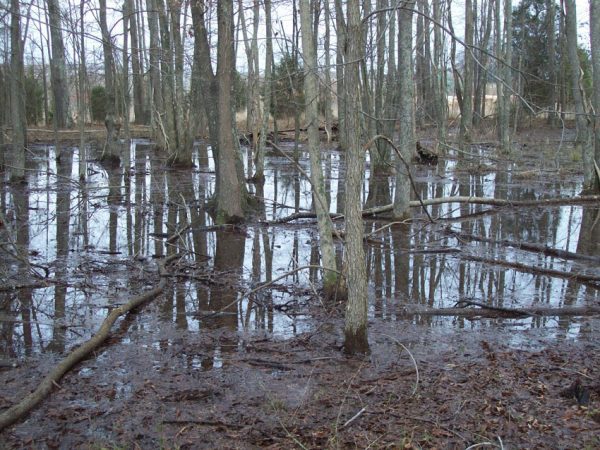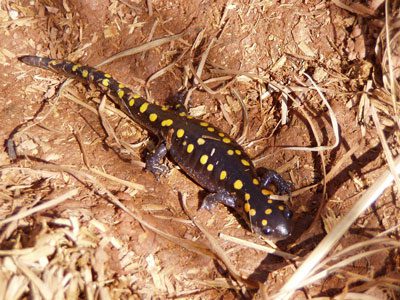When wetlands aren’t so wet anymore

What happens when you save a wetland, but not the wet?
On a winter’s walk last year through Flat Branch Nature Preserve, Chris Matthews, the county park department natural resources manager, saw the answer. The preserve, at Mecklenburg County’s southernmost tip, should have been dappled with pools, spongy with moisture. The water edges should have been speckled with salamander eggs.
Instead, the pools were gone. The ground was parched. Fire ants, an invasive species that kills amphibians and the young of ground-nesting birds and lives only where the ground is dry, had begun colonizing the woods.
Flat Branch, sandwiched between Ardrey Kell and Tom Short roads, contains the county’s largest remaining upland depression swamp forest. The upland swamp is a place where water naturally fills forest depressions in winter and early spring. It’s just 6 acres of the 43-acre preserve. But it is an uncommon ecosystem for the county and the perfect habitat for certain species. Atamasco lilies, quillwort, overcup oak and spotted salamander all have found a home at Flat Branch.
But the habitat’s future is in question. Matthews, who works for the county’s Park and Recreation Department, points to Flat Branch’s history, before it became a nature preserve in 2008, as a lesson for the future. The soil surrounding the preserve is a dense dark gray clay, which retains more water than typical Carolinas Piedmont red clay. When the neighborhoods that surround Flat Branch were developed, Matthews says, the soil was so water-logged it was pushed into long berms and left for months to dry out.
When the houses went up and the roads were improved, the water that used to flow from the surrounding land to feed Flat Branch was channeled into storm drains and detention ponds. That’s the way subdivisions get developed, and it was all done to code, says Michael Kirschman, division director for Nature Preserves & Natural Resources.
But cut off from the water that used to refresh its pools, the forest began to change.
“What we have found over the years is you preserve this (wetland) and develop all around, and you kill the wetland,” Matthews said. “All along in south Charlotte (are areas) where they developed around pockets of wet forest protected by the Clean Water Act. But the watershed also needs to be protected, because that’s the source of water.”
Originally, Flat Branch was purchased by the county to be an active-use park, the kind with playground equipment and soccer fields. But in 2007, a natural resources team surveyed every parcel of banked park-and-recreation land to see if it should be protected as a preserve, and Flat Branch easily made the cut.
“If we would have known about this years ago, we would have tried to have gotten more land down there,” Kirschman said. “Any time you change hydrology you slowly, over time, will change vegetation,” he added. “You lose what you had, basically.”
What the law doesn’t govern, persuasion and cooperation may affect. The park department’s Matthews is working on a plan to start bringing developers into conversations about ways to protect nearby natural resources. And Kirschman said the team hopes to save the wetland by creating a network of 6- to 8-inch earthen berms that keep water on the property longer.
Particularly when it comes to the Piedmont’s watery places, taking care is key. Upland wetlands are unique habitats, said Sharon Wilson, land stewardship director at Catawba Lands Conservancy. “They serve a function in the ecosystem as it relates to water quality and the volume of water. There’s some wildlife totally dependent on them.”
It’s not just the salamanders that lose out. The county park department plans to work with nearby Polo Ridge Elementary to eventually create an outdoor classroom using the preserve to teach hands-on science lessons to children.
Flat Branch will still have much to offer students and other visitors when the classroom and trails are built. But unless more water can get to the wetland and stay on it longer, it may not be the place it once was.
Click here to read Amber Veverka’s blog, Backyard And Beyond.